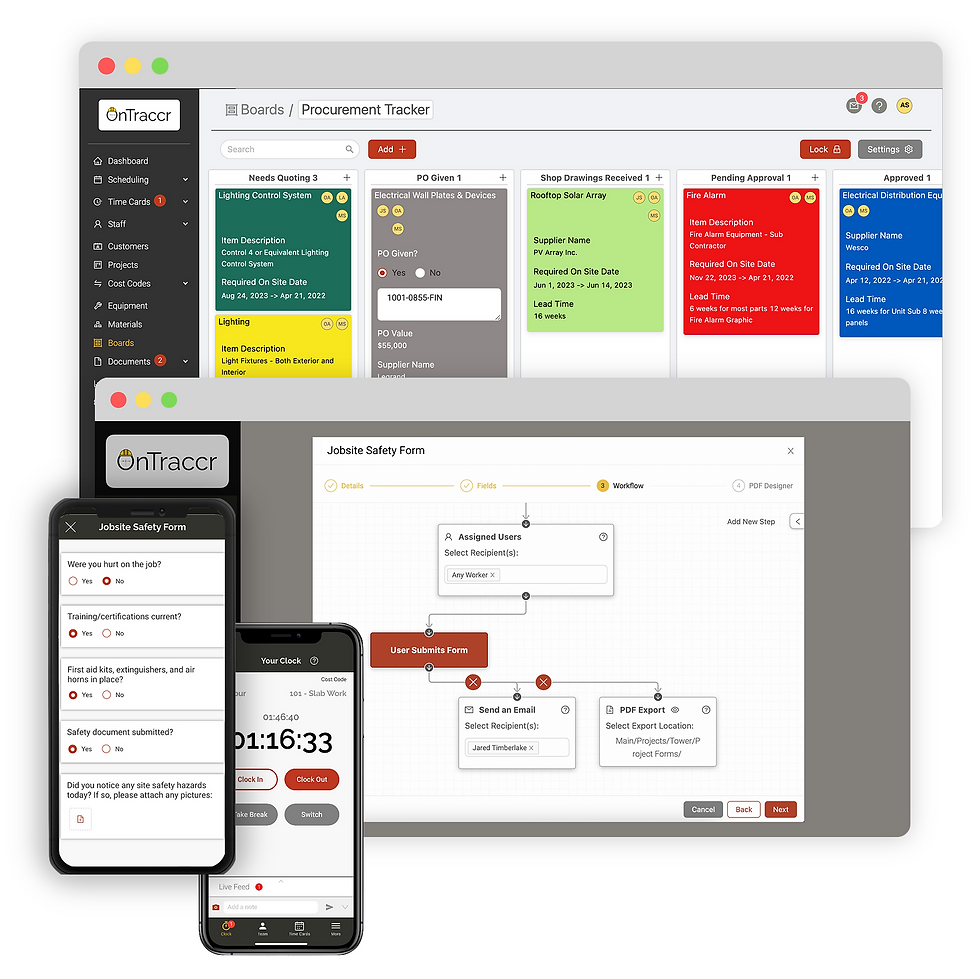In today's fast-paced construction industry, the accurate and timely management of data is crucial for project success. However, relying on traditional manual data entry methods poses several risks and challenges that can hinder productivity, increase costs, and compromise project outcomes.
Moreover, the term 'manual data entry methods' often conjures the misconception that it solely pertains to paper and spreadsheets. However, this oversimplification fails to encompass the scope, as it also encompasses modern software solutions demanding extensive manual updates and lacking a design for seamless automation.
In this blog post, we will explore the dangers of manual data entry in construction and why embracing digital automation is the key to unlocking greater efficiency and success.

1. Human Error: The Achilles' Heel of Manual Data Entry
Manual data entry is highly susceptible to human error, no matter how experienced the personnel may be. From simple typos to misplacing decimal points, errors in data entry can lead to costly mistakes in project estimates, timelines, and resource allocation. The repercussions of such errors can be far-reaching, resulting in rework, budget overruns, and schedule delays.
2. Time-Consuming and Tedious
Construction projects are time-sensitive, and manual data entry can be laborious and time-consuming. The process can often involve physically writing down information, transferring it to spreadsheets or documents, and then cross-referencing and validating the data. This cumbersome approach slows down workflows, leaving little time for analyzing critical project data and making informed decisions.
3. Lack of Real-Time Insights
In a rapidly changing construction environment, access to real-time insights is essential for effective decision-making. Manual data entry systems often suffer from lag time, making it challenging for project managers to stay up-to-date with project progress, resource allocation, and budgetary changes. Delayed access to data can result in missed opportunities for course correction and may hinder overall project performance.

4. Inefficient Communication and Collaboration
Construction projects involve multiple stakeholders, including architects, engineers, contractors, and subcontractors. Manual data entry can lead to siloed information, making it difficult for different teams to collaborate efficiently. Miscommunication and data discrepancies between teams can cause misunderstandings, project delays, and disputes that impact project success.

5. Limited Data Security
Paper-based data entry and physical files are susceptible to loss, theft, or damage due to unforeseen events like accidents or natural disasters. Such incidents can result in irreplaceable data loss and jeopardize the entire project's progress. Moreover, manual data entry offers limited data security, making it susceptible to unauthorized access and tampering.
The Solution: Embrace Digital Automation
To overcome the dangers posed by manual data entry, construction companies must embrace digital automation solutions. Here are some benefits of adopting construction-specific software automation solutions:
Automated Workflows: Construction technology solutions such as Construction Workflow Automation (CWA) can fully automate data entry processes, reducing the chances of human errors and ensuring accurate and up-to-date information is readily available.
Real-Time Insights: Cloud-based construction software provides real-time access to project data, enabling stakeholders to make informed decisions promptly.
Enhanced Collaboration: Digital platforms promote seamless communication and collaboration among different project teams, fostering better coordination and reducing misunderstandings.
Data Security: Cloud-based solutions offer robust data security, ensuring that sensitive information is protected against unauthorized access and potential loss.
Time and Cost Savings: Automation of data entry tasks frees up valuable time for construction professionals to focus on more critical aspects of the project, reducing operational costs and increasing overall efficiency.

Final Thoughts
In conclusion, manual data entry in construction poses numerous dangers, ranging from human errors to communication breakdowns and data security risks. Embracing digital automation by adopting construction-specific software solutions empowers construction companies with streamlined workflows, real-time insights, enhanced collaboration, and improved data security.
By leaving behind the pitfalls of manual data entry, the construction industry can forge a path towards success, efficiency, and sustainable growth in an increasingly competitive landscape.






